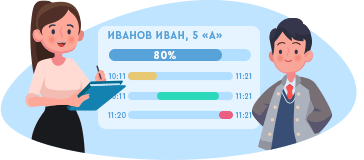Hello, guys! Welcome to Grammar Zone! My name’s Harry Jones.
My best friends Allan and Kate will help me make our lessons useful and enjoyable.
Last week Harry, Allan and Kate went to the London Eye. When they arrived, the queue was huge. The people at the front had been waiting for more than an hour! Luckily though, they didn’t have to wait more than 10 minutes, because Harry had already bought tickets on the Internet.
The view from the top was wonderful. Kate was very excited, because when she was little she used to be scared of high places, but not any more. She had brought her camera with her – she wanted to take hundreds of photos.
Unfortunately, she dropped the camera onto the floor and it didn’t work properly from then on. She wasn’t too sad, because she had already taken lots of beautiful photos and the camera was quite old. She had been asking her dad for a new one for ages!

Look at these highlighted forms. Do you recognize them? What tense forms are they?
Had bought, had brought and had taken are the Past Perfect forms.
Had been waiting, had been asking are the Past Perfect Continuous forms.
Today in the lesson we’ll compare these two tenses:
- their formation;
- their use;
- time expressions that help us to define them.
First let’s revise the formation of the Past Perfect Tense.
Complete the table.
We form the Past Perfect Tense with the help of HAD and regular forms of the main verb (by putting the ending –ed to the main verb) or irregular forms of the main verb (using the list of irregular verbs or learning them by heart).
E.g.
She had arrived early.
We had left by 8 p.m.
We form questions be putting HAD before the subject.
E.g.
Had she arrived early?
Had we left by 8 p.m.?
We form negations by putting not after HAD (had not or hadn’t for short)
E.g.
She had not (hadn’t) arrived early.
We had not (hadn’t) left by 8 p.m.
Now let’s consider the formation of the Past Perfect Continuous Tense.
Complete the table.
We form the Past Perfect Continuous Tense with the help of auxiliary verb had, the 3rd form of the verb to be – been and the main verb with the – ing suffix.
She had been waiting for a bus.
We form negations by putting not between had and been.
She had not been waiting for a bus.
We form questions by putting had before the subject.
Had she been waiting for a bus?
Use
1. We use the Past Perfect Tense for one past action which happened before another past action or a stated time in the past. The action that happened earlier in the past (“older action”) is in the Past Perfect tense and the action which happened later (“younger action”) is in the Past Simple.

She got up late because I had forgotten to set the alarm clock.
Ben hadn’t slept well the night before, so he was very tired.
The Past Perfect Continuous is used to show the duration of an action which started and finished in the past before another past action or a stated time in the past.
We had been living in the same house for twelve years before we decided to move.
2. Past Perfect is used for an action which finished in the past and whose result was visible in the past.
All the plants on my balcony were dead. I had watered them too much.

The Past Perfect Continuous is used for an action which lasted for some time in the past and whose result was visible in the past.
Her feet ached because he had been shopping all day.
3. The Past Perfect is the past equivalent of the Present Perfect.
Compare these two sentences.
There was no cake left; he had eaten it all.
(The action had eaten happened in the past and the result There was no cake left was visible in the past, too.)
There is no cake left; he has eaten it all.
(The action has eaten happened in the past and the result There is no cake left is still visible in the present.)
The Past Perfect Continuous is the past equivalent of the Present Perfect Continuous.
Compare these two sentences:
a) Simon was frightened. He had been watching a horror film for half an hour.
(The action “had been watching” lasted for some time in the past and the result “was frightened” was visible in the past.)
b) Simon is frightened. He has been watching a horror film for half an hour.
(The action “has been watching” started in the past and the result “was frightened” is still visible in the present.)
Both the Past Perfect and the Past Perfect Continuous are used with the following time expressions: for, since, how long, before, after, ever/never, by the time.
I had been trying to find him for years but I failed.
They had known each other for a long time.
It’s 11 a.m. Paul had been talking on the phone since 9 a.m.
How long had you been waiting there?
Pam had been doing the same job for ten years before she decided to do something different.
Matt phoned after I had finished my homework.
They had never seen such a beautiful sunset in their lives.
By 12 o’clock they had drunk four cups of tea each.
Allan: Now it’s time to practice the rule. Complete with the Past Perfect or the Past Perfect Continuous.
Last was both the happiest and the worst day in my parents’ life.
It was the happiest because my dad had won the lottery, and the worst because we couldn’t find the lottery ticket!
After my parents had looked everywhere for it, they began to panic. Then my dad remembered something: on the day he had bought the lottery ticket, he had been wearing his old black jacket. The ticket was in the pocket! When dad told this my mum, her face went white. The previous day, she had given the jacket to a charity for homeless people!
My dad didn’t waste any time. After he had explained the situation to all our friends and relatives, they agreed to help. They had been searching everywhere for a week. Nobody had seen the jacket.
By then, my dad had lost 5 kilos. He walked the streets with red yes, talking to himself. He looked terrible.

That Sunday, seven days after he had won the lottery, he was out in the street again. He was cold and tired so he sat on the grass to rest for a while.
Allan: What happened next? Think of the ending of the story.
Harry: That’s all for today. I hope now you have a good understanding of the use and formation of the Past Perfect and the Past Perfect Continuous tenses.
Oh, yes… I almost forgot… Allan asked me to show this note to you. Look:
A homeless old man came and sat next to him. “Hey mate,” he said. “It’s cold. Put that on. It will keep you warm.” In his hands, he had an old black jacket. My dad could just see the corner of a lottery ticket in the inside pocket.

 Получите свидетельство
Получите свидетельство Вход
Вход





 2454
2454

